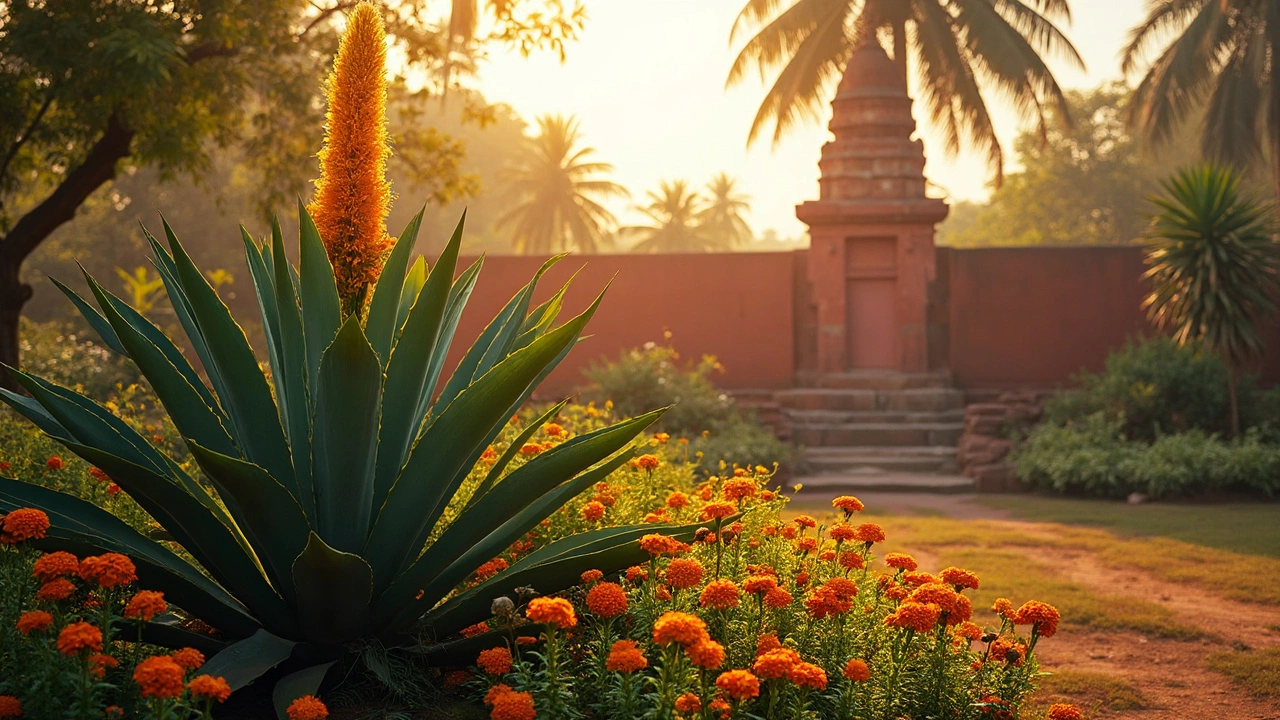Century Plant Care Guide – Grow a Healthy Agave americana
If you’ve seen a big, spiky plant with rosettes and thought it looks cool, you’re probably looking at a century plant. It’s actually an agave, and despite its name it doesn’t live for a hundred years. With the right basics you can keep it thriving in your garden or balcony.
Sunlight, Water and Feeding
Century plants love bright light. A spot that gets at least six hours of direct sun each day is ideal. In very hot Indian summers, a little afternoon shade can protect the leaves from sun‑burn. When it comes to water, less is more. Let the soil dry out completely before you water again – usually every two to three weeks in summer, and even less in monsoon or winter. Over‑watering is the number one mistake; it leads to root rot and mushy leaves.
When you do water, soak the soil well and let excess drain away. Use a watering can with a narrow spout to avoid splashing the leaves. If you notice the tips turning brown, you’re probably over‑watering or the plant is getting too much direct heat.
Feeding is optional, but a light dose of a balanced succulent fertilizer in early spring can boost growth. Mix one‑quarter of the recommended amount and apply once every six weeks. Avoid fertiliser in the rainy season because excess nutrients can cause soft growth that is prone to disease.
Soil, Planting and Propagation
Good drainage is the secret behind a happy century plant. Use a mix of cactus soil, coarse sand and a bit of perlite – about 2:1:1 ratio works well. This combo lets water flow through quickly while still holding enough moisture for the roots.
When planting, create a small mound in the centre of the pot, place the plant’s base on top and back‑fill around it. Press the soil lightly to remove big air pockets, but don’t compact it. A pot with drainage holes is a must; a saucer under the pot will catch any runoff.
Propagation is easy because century plants produce offsets, also called pups. Look for small rosettes growing at the base of the main plant. Gently dig them out with a sharp knife, making sure each pup has a few roots attached. Let the cut end dry for a day, then plant it in the same soil mix. Keep it dry for a week before giving the first light water.
In winter, the plant goes semi‑dormant. Reduce watering to once a month and keep it in a cooler spot (around 10‑15°C). This rest period helps the plant store energy for the next growing season.
Watch out for pests like mealybugs and spider mites. A quick wipe with a cotton swab dipped in alcohol can clear a small infestation. For larger problems, spray a mild neem oil solution every seven days until the pests disappear.Finally, remember that century plants grow slowly but can become huge over time. If space is limited, prune the outer leaves carefully with clean shears to keep the size manageable. Always wear gloves – the leaf tips are sharp.
Following these simple steps – bright light, well‑draining soil, careful watering, occasional feeding and proper propagation – will give you a robust century plant that looks impressive year after year.
What Plant Only Blooms Every 100 Years? Exploring the Legendary Century Flowers
Some plants take patience to a new level, but the century plant pushes it to the extreme, rumored to bloom only once in a hundred years. Although its actual bloom time is shorter, the spectacle it offers is rare and unforgettable. This article covers the famous 'century plant,' its bloom habits, real-life stories, and tips for anyone hoping to see this floral wonder in their lifetime. Get practical advice for growing your own and discover its fascinating place in Indian gardens. Plus, learn why a dog like Max might not be the best helper for tending these spiky giants.
About
Flower Gardening
Latest Posts


Common Indoor Plant Care Mistakes You Should Avoid
By Alden Thorne Jan 3, 2025

Top Easy Houseplants for Beginners - Low‑Maintenance Indoor Greens
By Alden Thorne Oct 7, 2025

Which Flower Is Most in Demand in India? Digging Into the Popular Choices
By Alden Thorne Apr 30, 2025

